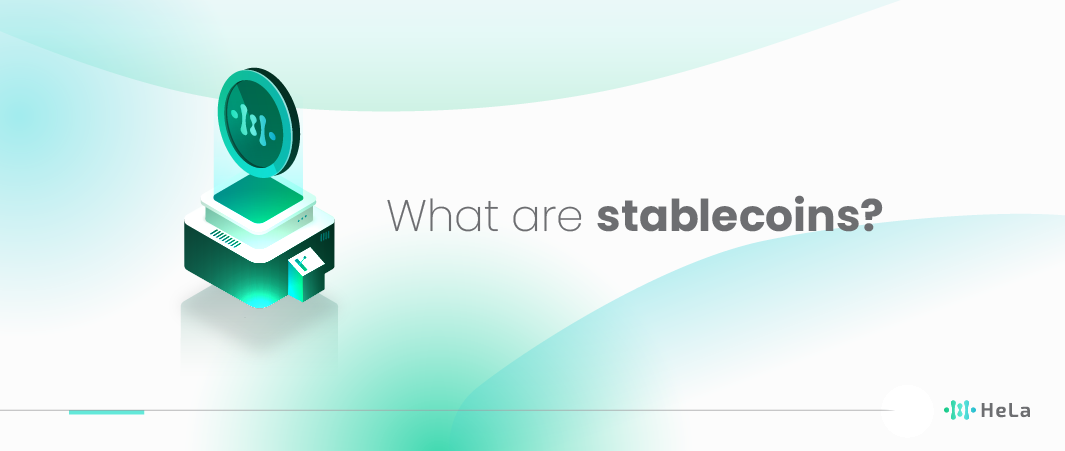In the ever-evolving world of cryptocurrency, stablecoins have emerged as a crucial innovation, bridging the gap between traditional finance and digital assets. Unlike other cryptocurrencies known for their volatility, stablecoins offer a more stable and reliable value, making them an attractive option for both investors and everyday users. But what exactly are stablecoins?
Stablecoins are digital currencies designed to minimize price fluctuations by pegging their value to a stable asset, such as a fiat currency like the US dollar, a commodity like gold, or even other cryptocurrencies. This stability makes them a preferred medium of exchange, store of value, and unit of account in the digital economy. As we delve deeper into the world of stablecoins, we’ll explore their mechanics, types, benefits, risks, and their comparison with other cryptocurrencies.
Understanding stablecoins is essential for anyone interested in the future of finance. Whether you’re a seasoned crypto enthusiast or just starting to explore the digital currency landscape, this guide will provide you with the knowledge you need to navigate and leverage the benefits of stablecoins effectively.
What Are Stablecoins?

Stablecoins are a type of cryptocurrency designed to maintain a stable value by being pegged to a reserve asset like a fiat currency, commodity, or another cryptocurrency. This pegging mechanism helps to reduce the price volatility typically associated with cryptocurrencies like Bitcoin or Ethereum. The primary purpose of stablecoins is to combine the benefits of digital currency – such as fast transactions and low fees – with the stability of traditional financial systems.
There are several different types of stablecoins, each with its own mechanism for maintaining stability. Some stablecoins are backed by physical assets, like the US dollar or gold, which are held in reserve by a central authority. Others use algorithms to control the supply of the coin in response to market demand, ensuring the price remains stable. Regardless of the mechanism, the goal is the same: to provide a reliable and stable digital currency.
Also Read: 7 Best Crypto Analytics Companies to Check this 2024 (Updated List)
Stablecoins have gained popularity for their utility in various financial applications. They can be used for everyday transactions, as a store of value, or as a hedge against the volatility of other cryptocurrencies. By offering a stable and predictable value, stablecoins provide a bridge between the traditional financial system and the emerging digital economy, making them an essential component of the cryptocurrency landscape.
Types of Stablecoins

Stablecoins come in various forms, each with its own approach to maintaining stability. Understanding the different types of stablecoins can help users and investors choose the one that best fits their needs. Here are the main types of stablecoins:
Fiat-Collateralized Stablecoins
Fiat-collateralized stablecoins are backed by a reserve of traditional fiat currency, such as the US dollar, euro, or yen. These reserves are typically held by a central authority, such as a bank or a trusted financial institution. The value of the stablecoin is pegged to the value of the fiat currency at a 1:1 ratio. For example, each Tether (USDT) is equivalent to one US dollar held in reserve. This backing provides a high level of confidence and stability for users, making fiat-collateralized stablecoins widely used in the cryptocurrency market.
Crypto-Collateralized Stablecoins
Crypto-collateralized stablecoins are backed by reserves of other cryptocurrencies instead of fiat currencies. Due to the inherent volatility of cryptocurrencies, these stablecoins are usually over-collateralized to ensure stability. For instance, $150 worth of Ethereum might be held in reserve to back $100 worth of a crypto-collateralized stablecoin. This over-collateralization helps to absorb price fluctuations in the underlying crypto assets. Dai (DAI) is a prominent example of a crypto-collateralized stablecoin, backed by Ethereum and other cryptocurrencies through smart contracts on the MakerDAO platform.
Commodity-Collateralized Stablecoins
Commodity-collateralized stablecoins are backed by physical assets such as gold, silver, or real estate. The value of these stablecoins is linked to the value of the underlying commodity, providing a tangible asset that supports the stablecoin’s value. For example, a stablecoin backed by gold would have its value tied to the current market price of gold, with reserves held in vaults by trusted custodians. This type of stablecoin offers an additional layer of stability and trust through tangible assets.
Algorithmic Stablecoins
Algorithmic stablecoins, also known as non-collateralized stablecoins, rely on algorithms and smart contracts to maintain their value rather than being backed by any physical or crypto assets. These stablecoins use algorithms to control the supply of the coin based on market demand. If the price of the stablecoin rises above the target value, the algorithm increases the supply to bring the price down. Conversely, if the price falls below the target, the algorithm reduces the supply to push the price up. Ampleforth (AMPL) and TerraUSD (UST) are examples of algorithmic stablecoins that adjust their supply to maintain stability.
Each type of stablecoin has its strengths and weaknesses. Fiat-collateralized stablecoins offer high stability but depend on central authorities and reserves. Crypto-collateralized stablecoins provide decentralization but require over-collateralization. Commodity-collateralized stablecoins provide tangible backing but depend on the stability of the underlying asset. Algorithmic stablecoins offer an innovative approach to stability but may face challenges in maintaining trust and effectiveness.
How Stablecoins Work?

Stablecoins are designed to maintain a stable value through various mechanisms, ensuring they remain reliable and predictable for users. Here’s an overview of how these mechanisms function to achieve stability:
1. Pegging to Stable Assets
The primary way stablecoins maintain their value is by pegging their price to a stable asset. This asset can be a fiat currency, a commodity, or a basket of assets. The pegging ensures that the value of the stablecoin remains relatively constant, as it reflects the value of the underlying asset. For instance, a stablecoin pegged to the US dollar aims to always be worth approximately one dollar.
2. Collateralization
Stablecoins can be collateralized, meaning they are backed by reserves that provide security and stability. There are different types of collateralization:
- Fiat-Collateralized: These stablecoins are backed by traditional fiat currencies held in reserve. For every stablecoin issued, an equivalent amount of fiat currency is held in a bank account. This ensures that users can redeem their stablecoins for fiat currency at any time.
- Crypto-Collateralized: These stablecoins are backed by other cryptocurrencies. Due to the volatile nature of cryptocurrencies, these stablecoins are often over-collateralized to maintain stability. For example, $150 worth of Ethereum might back $100 worth of a crypto-collateralized stablecoin.
- Commodity-Collateralized: Some stablecoins are backed by physical assets like gold or real estate. These assets are held in reserve, and the value of the stablecoin is tied to the value of the underlying commodity.
3. Algorithmic Mechanisms
Some stablecoins use algorithms and smart contracts to maintain their value without being backed by physical assets. These algorithmic stablecoins adjust their supply based on market demand. If the price of the stablecoin rises above its target value, the algorithm increases the supply to bring the price down. Conversely, if the price falls below the target, the algorithm reduces the supply to push the price up. This approach aims to balance the supply and demand dynamically.
4. Audits and Transparency
To maintain trust and stability, many stablecoin issuers conduct regular audits and provide transparent reporting of their reserves. This transparency helps assure users that the stablecoins are fully backed and that the value is maintained.
By employing these mechanisms, stablecoins achieve price stability, making them suitable for various financial applications. They offer the benefits of digital currency, such as fast transactions and low fees, while minimizing the risks associated with price volatility.
Benefits and Risks of Stablecoins

Stablecoins offer a range of benefits that make them an attractive option for various financial activities. However, like any financial instrument, they also come with certain risks. Understanding both the advantages and potential drawbacks is crucial for making informed decisions.
Benefits of Stablecoins
- Price Stability: The primary benefit of stablecoins is their ability to maintain a stable value, reducing the volatility commonly associated with other cryptocurrencies. This makes them a reliable medium of exchange and store of value.
- Facilitate Digital Transactions: Stablecoins enable fast, low-cost transactions across borders, making them an efficient tool for international payments and remittances. They combine the benefits of digital currencies with the stability of traditional fiat currencies.
- Accessibility: Stablecoins provide access to financial services for people who may not have access to traditional banking systems. By using stablecoins, individuals in underbanked regions can participate in the global economy.
- Decentralization: For crypto-collateralized and algorithmic stablecoins, decentralization is a key advantage. These stablecoins operate without central authority control, offering increased transparency and security through blockchain technology.
- Hedging Against Volatility: Investors use stablecoins to hedge against the volatility of other cryptocurrencies. By converting their volatile assets into stablecoins, they can protect their portfolio from sudden price swings.
Risks of Stablecoins
- Regulatory Uncertainty: The regulatory environment for stablecoins is still evolving. Governments and regulatory bodies are working to establish frameworks to govern their use, which could impact their adoption and functionality.
- Centralization Risks: Fiat-collateralized stablecoins rely on central authorities to hold reserves. This centralization introduces risks such as the potential for mismanagement or lack of transparency regarding the reserves.
- Collateral Risks: For crypto-collateralized stablecoins, the underlying assets can be highly volatile. This requires over-collateralization, which can be inefficient and still does not entirely eliminate the risk of price instability in extreme market conditions.
- Algorithmic Stability: Algorithmic stablecoins depend on the effectiveness of their algorithms to maintain stability. If the algorithms fail or are manipulated, the stablecoin could lose its peg, resulting in significant price fluctuations.
- Security Vulnerabilities: Like all digital assets, stablecoins are susceptible to cyber-attacks and security breaches. Ensuring robust security measures is essential to protect user funds and maintain trust.
- Liquidity Risks: In times of market stress, stablecoins may face liquidity issues if there is a sudden surge in demand for redemptions. Ensuring adequate liquidity to meet redemption requests is crucial for maintaining stability.
By weighing these benefits and risks, users can better understand the role of stablecoins in the cryptocurrency ecosystem and make informed decisions about their use. Stablecoins have the potential to revolutionize digital finance, but they must be approached with caution and due diligence.
Stablecoins vs Other Cryptocurrencies
While stablecoins and other cryptocurrencies share some similarities, they have distinct differences that set them apart in terms of functionality, use cases, and value proposition. Understanding these differences can help users and investors make better decisions about their participation in the digital currency landscape.
Stability vs. Volatility
The most significant difference between stablecoins and other cryptocurrencies is price stability. Stablecoins are designed to maintain a stable value by being pegged to a reserve asset, such as a fiat currency, commodity, or a basket of assets. This stability makes them suitable for everyday transactions, as a store of value, and for use in financial applications where predictability is essential.
In contrast, traditional cryptocurrencies like Bitcoin (BTC) and Ethereum (ETH) are known for their price volatility. Their value can fluctuate significantly due to market demand, speculation, regulatory news, and other factors. While this volatility can offer opportunities for high returns, it also poses risks for users looking for stability and predictability.
Use Cases
Stablecoins and other cryptocurrencies serve different purposes in the financial ecosystem:
Stablecoins:
- Payments and Transactions: Due to their stable value, stablecoins are ideal for making payments and conducting transactions, both domestically and internationally. They provide a reliable means of exchange without the risk of significant value fluctuations.
- Savings and Remittances: Stablecoins offer a safe and stable option for savings and remittances, especially in regions with unstable local currencies or limited access to traditional banking services.
- DeFi Applications: In the decentralized finance (DeFi) space, stablecoins are commonly used as collateral, for lending and borrowing, and in liquidity pools to facilitate trading without the risk of volatility.
Also Read: Optimizing Hardware Specifications for HeLa Nodes
Other Cryptocurrencies:
- Investment and Speculation: Cryptocurrencies like Bitcoin and Ethereum are often used as investment assets. Their volatile nature presents opportunities for substantial gains, attracting traders and investors seeking high returns.
- Blockchain Ecosystems: Many cryptocurrencies power blockchain platforms and ecosystems. For example, Ethereum is the backbone of numerous decentralized applications (dApps), smart contracts, and DeFi projects.
- Store of Value: Some users view cryptocurrencies like Bitcoin as a digital store of value, similar to digital gold, due to their limited supply and increasing adoption.
Risk Profiles
The risk profiles of stablecoins and other cryptocurrencies differ significantly:
- Stablecoins: While they offer price stability, stablecoins face risks related to regulatory scrutiny, centralization (for fiat-collateralized stablecoins), and the effectiveness of their collateralization or algorithmic mechanisms.
- Other Cryptocurrencies: Traditional cryptocurrencies are subject to high market volatility, regulatory changes, security vulnerabilities, and technological risks. Their value can be influenced by market sentiment, technological advancements, and macroeconomic factors.
Regulatory Considerations
Regulation plays a crucial role in the adoption and use of both stablecoins and other cryptocurrencies:
- Stablecoins: Regulatory bodies are increasingly focusing on stablecoins due to their potential impact on the financial system. Issues such as reserve transparency, compliance with anti-money laundering (AML) and know your customer (KYC) regulations, and the systemic risk they might pose are under scrutiny.
- Other Cryptocurrencies: Cryptocurrencies face varying degrees of regulatory oversight depending on the jurisdiction. Regulatory clarity and developments can significantly affect their adoption, usage, and market value.
By understanding these differences, users can better appreciate the unique roles that stablecoins and other cryptocurrencies play in the digital economy. Each type of digital asset offers distinct advantages and challenges, catering to different needs and preferences within the financial landscape.
Conclusion
Stablecoins represent a significant advancement in the cryptocurrency world, offering the stability of traditional financial systems combined with the efficiency and innovation of digital assets. They serve as a bridge between the volatile world of cryptocurrencies and the more predictable realm of fiat currencies, making them an essential tool for a wide range of financial applications.
One of the primary benefits of stablecoins is their ability to provide price stability, which is crucial for everyday transactions, savings, and remittances. This stability makes them attractive to a broad audience, from individuals in regions with unstable currencies to businesses looking for reliable digital payment solutions. Additionally, stablecoins play a vital role in the burgeoning DeFi sector, enabling various financial activities such as lending, borrowing, and trading with minimal risk of value fluctuation.
However, it’s important to recognize that stablecoins are not without their risks and challenges. Regulatory uncertainty remains a significant concern, as governments and financial institutions work to establish clear guidelines and oversight mechanisms. Centralization risks, particularly for fiat-collateralized stablecoins, and the effectiveness of algorithmic models are also critical issues that need to be addressed to ensure long-term stability and trust.
As the cryptocurrency landscape continues to evolve, stablecoins are likely to play an increasingly prominent role. Their ability to offer stability while leveraging the benefits of blockchain technology positions them as a key component of the future financial system. By understanding how stablecoins work, their types, benefits, and risks, users can make informed decisions about how to best utilize these digital assets in their financial strategies.
Disclaimer: The information provided by HeLa Labs in this article is intended for general informational purposes and does not reflect the company’s opinion. It is not intended as investment advice or recommendations. Readers are strongly advised to conduct their own thorough research and consult with a qualified financial advisor before making any financial decisions.

Joshua Soriano
I am a writer specializing in decentralized systems, digital assets, and Web3 innovation. I develop research-driven explainers, case studies, and thought leadership that connect blockchain infrastructure, smart contract design, and tokenization models to real-world outcomes.
My work focuses on translating complex technical concepts into clear, actionable narratives for builders, businesses, and investors, highlighting transparency, security, and operational efficiency. Each piece blends primary-source research, protocol documentation, and practitioner insights to surface what matters for adoption and risk reduction, helping teams make informed decisions with precise, accessible content.
- Joshua Soriano#molongui-disabled-link
- Joshua Soriano#molongui-disabled-link
- Joshua Soriano#molongui-disabled-link
- Joshua Soriano#molongui-disabled-link

